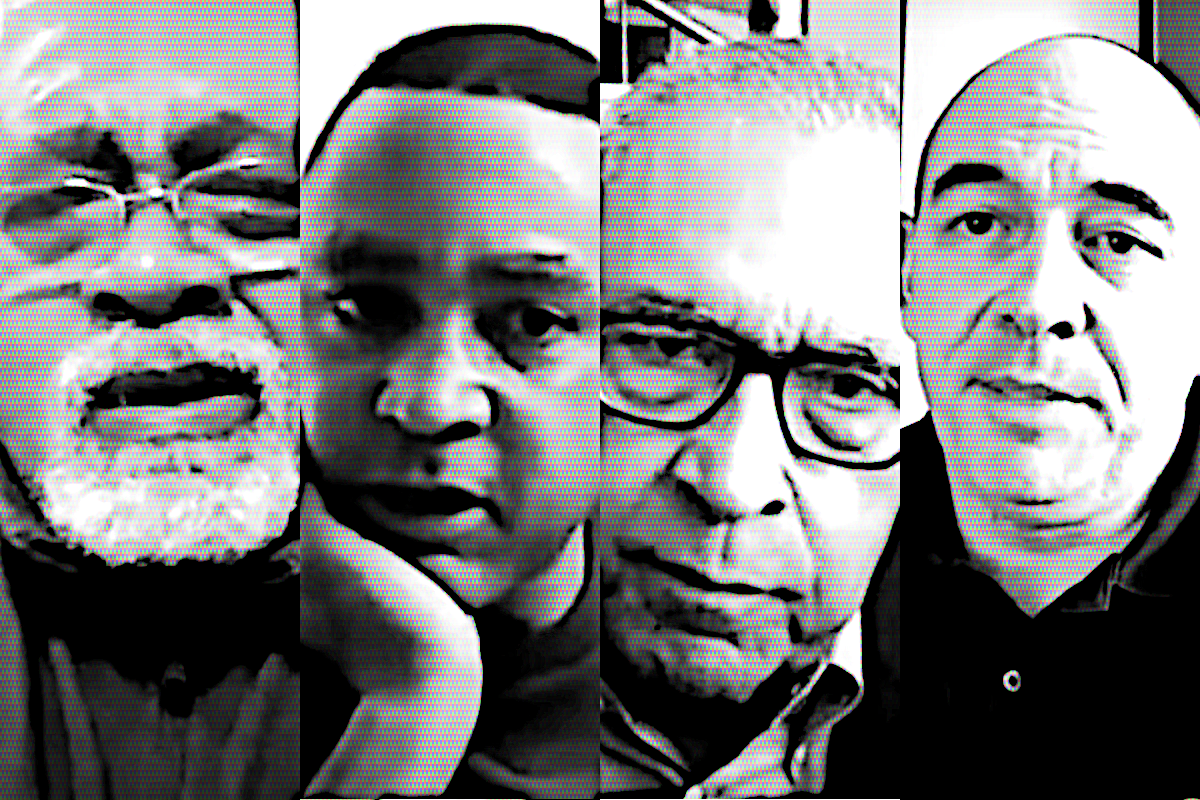Hate crimes
Hate Crime Hoaxes are More Common than You Think
Victimhood culture gives rise to hate crime hoaxes, then, because it makes them easier to pull off for the same reasons it makes them more lucrative.

This week Chicago police charged television star Jussie Smollett for disorderly conduct for filing a false police report. Smollett claimed to be the victim of a racist and homophobic attack on January 29, but in the days before the arrest it became clear that police believed Smollett had hired two men to attack him. Other reports implied he was also a suspect in a federal investigation of threatening letters mailed to Smollett the week before the attack. This was all baffling to many people unfamiliar with hate crime hoaxes. The author Roxane Gay tweeted that she “genuinely thought no one, and especially no one that famous, could make something like that up.”
I don’t even know what to say about Jussie Smollett. His story has seemed suspect for days now but I genuinely thought no one, and especially no one that famous, could make something like that up.
— roxane gay (@rgay) February 17, 2019
But people make all sorts of things up, even things like that. More baffling to us than a hate crime hoax is that people would find such hoaxes baffling. Lying is hardly uncommon in our species, and false claims of victimhood, like other lies, become more common when they provide some advantage to the liar and when they’re likely to be believed. That hate crime hoaxes seem strange or the motives unclear might simply be due to a lack of familiarity with them and with their social context. If you want to understand them better, here are three things to know.
First of all, hate crime hoaxes aren’t new or unusual. In our book The Rise of Victimhood Culture: Microaggressions, Safe Spaces, and the New Culture Wars, we discuss a number of cases of people falsely reporting or even staging hate crimes. In 1997 two black students at Duke University hung a black baby doll from a tree near the spot where the Black Student Alliance was planning a protest. In 1998 a St. Cloud State University student slashed her own face and claimed that two men had assaulted her and yelled anti-gay slurs. In 2004 a visiting professor at Claremont McKenna College slashed the tires of her own car and painted ethnic slurs and a swastika on it. In 2011 a University of Virginia law student published a letter in the law school’s newspaper in which he falsely claimed to have been mistreated by two white police officers.
More recently, after Donald Trump was elected president, major newspapers published a number of stories about what were apparently Trump-inspired hate crimes, but many of these also turned out to be hoaxes. A black student at Bowling Green State University falsely claimed three white men wearing Trump paraphernalia attacked her. A bisexual student at North Park University claimed to have gotten notes with homophobic slurs from Trump supporters, but the university president later announced the student had written the notes herself. A Muslim woman in New York falsely claimed that men yelling “Donald Trump” and anti-Muslim insults attacked her and tried to remove her hijab. Similarly, a Muslim student at the University of Michigan falsely claimed that a man told her he’d light her on fire if she didn’t remove her hijab.
Why aren’t such cases more widely known? We’re not the only ones who’ve written about them. Conservative publications like National Review have been writing about hate crime hoaxes for decades. Coverage has been spottier, though, in mainstream publications. The Chronicle of Higher Education published an article on hate crime hoaxes in 1999, as did the Los Angeles Times in 2004. But if you’ve missed the few mainstream stories, and if you don’t follow conservative media, you may not have a sense of how often stories of hate crimes turn out to be false or a sense of what the false cases tend to look like.
Even fairly incompetent hoaxes might therefore succeed, which brings us to our second point: Hate crime hoaxes aren’t hard to pull off. Whatever the truth of the Jussie Smollett case turns out to be, it seems clear that Smollett was not some criminal mastermind. The idea that two violent, racist, homophobic Trump supporters wearing red “Make America Great Again” hats happened upon Jussie Smollett late one night in Chicago, knew who he was, and then pulled out a noose and some bleach they conveniently had with them—and that all this happened one week after someone else mailed threatening letters to Smollett—seemed fishy to us from the start. Strange, implausible details don’t mean an attack didn’t occur, but they’re enough to raise questions. Yet many celebrities and Democratic presidential candidates immediately accepted the story at face value and offered their support for Smollett, sometimes placing the blame for the attack on Republicans. If Smollett was in fact behind the hoax, this was probably the kind of reaction he was hoping for.

Real hate crimes happen, of course. We’re not arguing that all or even most alleged hate crimes are hoaxes. But the ones dominating the headlines in recent years have often been false or misleading, possibly because fake cases are better designed to push the buttons of drama and partisanship. Real hate crimes don’t necessarily have offenders who conveniently announce themselves to be members of your political outgroup, or display a stylized iconography of evil, like nooses and swastikas. The hoaxes, by contrast, often read like political-struggle fan fiction, with the hoaxers making themselves Mary Sues and their adversaries stock villains. At St. Olaf College, a racist note later revealed to be a hoax read in part, “You have spoken up too much. You will change nothing. Shut up or I will shut you up.” Or consider a case at the University of Wyoming, where a student posted anonymous comments about herself on the “UW Crushes” Facebook page. Intended to look like it came from a Republican man, the post expressed sexual desire for the hoaxer and referred to her as “that chick that runs her liberal mouth all the time.”
That the hoaxes act as simple morality tales illustrating an outgroup’s evil, or that they flatter the hoaxers, are part of what makes them attractive to the hoaxer’s audience. Whether hoaxers have personal motives—such as seeking fame, sympathy, or support—or political motives—such as mobilizing allies to fight a common enemy or injustice—they succeed among those sharing their moral and political commitments, not despite their sloppiness but because of it. Political polarization means that hoaxes that tap into one side’s fears and biases are likely to be believed.
Long term cultural trends matter, too, and the third thing to know is that hate crime hoaxes thrive in a culture of victimhood. We use the term victimhood culture to refer to a new moral framework that differs from the older cultures of honor and dignity. Honor culture refers to a morality that revolves around physical bravery. In honor cultures one’s reputation is important, and it might be necessary to engage in violence to protect it. In the dignity cultures that replaced honor cultures, morality more often revolves around the idea that people have equal moral worth. Insults and slights don’t lower one’s status as they do in honor cultures, and people can ignore many minor offenses and go to the police and courts for more serious ones. Victimhood culture, which is in its most extreme form among campus activists, is different from both honor and dignity cultures. Its morality revolves around a narrative of oppression and victimhood, with victimhood acting as new kind of moral status, much like honor was a kind of moral status in many traditional societies.
Something like a hate crime hoax would make no sense in an honor culture. You might falsely accuse someone of insulting you so that you have a chance to display your honor, but you’d be trying to get them to engage in a duel or some other kind of fight. You’d be trying to demonstrate strength, to show you can handle your conflicts on your own. The last thing you’d want to do is claim to be a victim in need of help. Hate crime hoaxes make a little more sense in a dignity culture. Hate crimes are offenses against dignity, and perhaps you’d have something to gain by falsely claiming victimhood. But in a moral world less focused on praising victims and demonizing the privileged, the benefits are lesser and skepticism is greater.
It is in a victimhood culture that hate crime hoaxes are most attractive. Hate crime hoaxes are false tales of oppression, and those who understand human interaction in these terms are quick to believe such tales and offer support to those they see as the victims. And to the extent that the hoaxer already belongs to a group seen as a victim group—ethnic minorities, sexual minorities, etc.—adherents of the new culture tend to see them as especially credible. They might even promote the idea that it’s our moral duty to believe victims. In that context waiting for evidence or giving due process to the accused is itself a form of injustice, a way of further victimizing the oppressed and aiding their oppressors. In a victimhood culture, even when hate crime hoaxes are exposed, they are excused as an attempt to raise awareness of a real problem or as the understandable reaction of someone suffering from so much unrecognized oppression.
Victimhood culture gives rise to hate crime hoaxes, then, because it makes them easier to pull off for the same reasons it makes them more lucrative. However, while others might balk at scrutinizing evidence, the police do so as a matter of routine. Claims that get a friendly hearing from campus administrators, Twitter mobs, and even journalists, can quickly collapse when they come to the attention of the police, and hoaxers who were initially very successful in mobilizing support might then face serious punishment. Right now the police don’t automatically “believe the victim” in such cases, but that could change if victimhood culture continues to spread.






